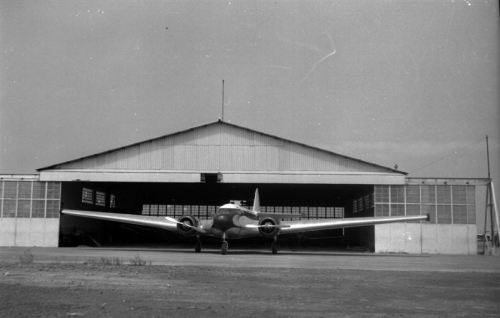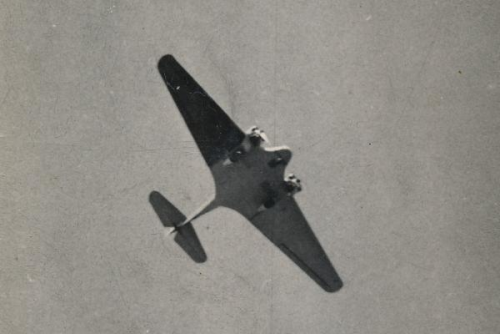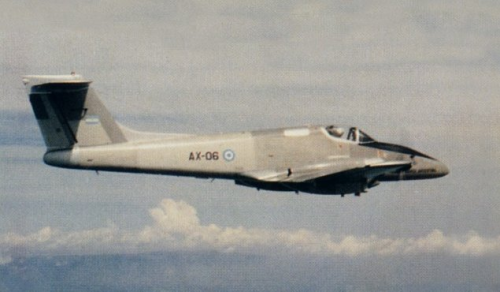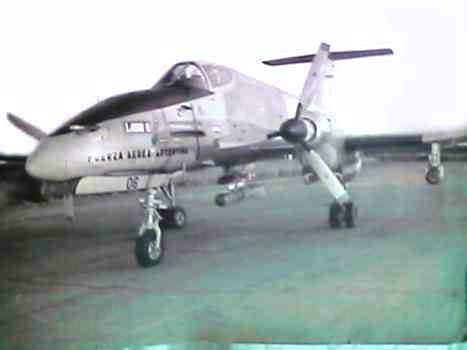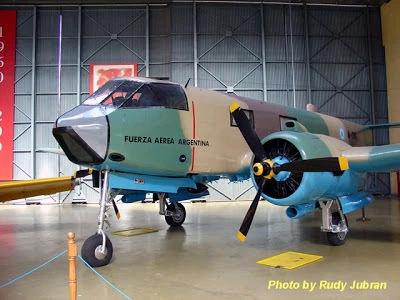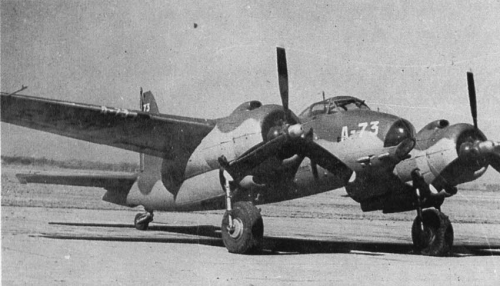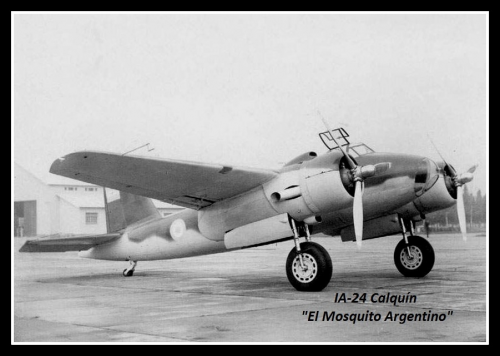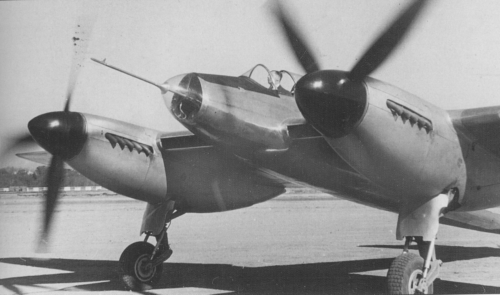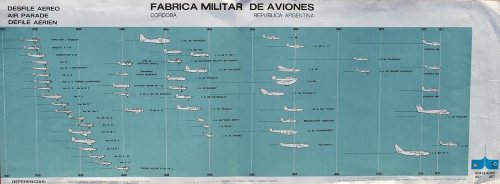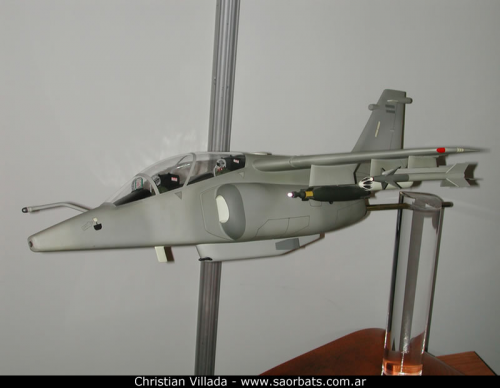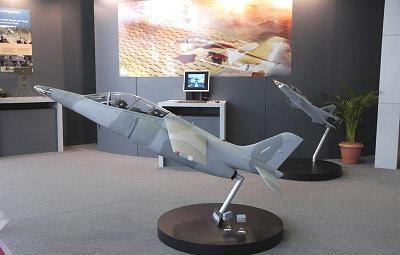You are using an out of date browser. It may not display this or other websites correctly.
You should upgrade or use an alternative browser.
You should upgrade or use an alternative browser.
Latin American aircraft
- Thread starter pegasus
- Start date
- Joined
- 26 May 2006
- Messages
- 34,928
- Reaction score
- 15,798
Hi Pegasus,
we discussed it here;
 www.secretprojects.co.uk
www.secretprojects.co.uk
Please Moderator,merge those topics.
we discussed it here;
Lascurain Aura,a forgotten aircraft of 1957
Hi, this is a forgotten Mexican aircraft of 1957,called Lascurain Aura,it was twin engined low-wing light transport aircraft. http://vintageaeroplanewriter.blogspot.com/2010/11/forgotten-aircraft-1957-lascurain-aura.html
Please Moderator,merge those topics.
pegasus
I really should change my personal text
- Joined
- 22 March 2019
- Messages
- 303
- Reaction score
- 208
This thread is not only about the Lascurain Aura, i like it because it represented a very nice try to make a really powerful aircraft industry, Latin America in general has made machines that if the projects would have been followed properly today we would be certainly much more advanced for exampleHi Pegasus,
we discussed it here;
Lascurain Aura,a forgotten aircraft of 1957
Hi, this is a forgotten Mexican aircraft of 1957,called Lascurain Aura,it was twin engined low-wing light transport aircraft. http://vintageaeroplanewriter.blogspot.com/2010/11/forgotten-aircraft-1957-lascurain-aura.htmlwww.secretprojects.co.uk
Please Moderator,merge those topics.
That helicopter was designed in Bolivia is called Sirionó II it is a prototype and it is usual in our countries many projects do not go beyond prototype stage
If you are interested you can read this link and see lots of pictures of the chopper
http://helicopterosfumi.blogspot.com/
Last edited:
pegasus
I really should change my personal text
- Joined
- 22 March 2019
- Messages
- 303
- Reaction score
- 208
pegasus
I really should change my personal text
- Joined
- 22 March 2019
- Messages
- 303
- Reaction score
- 208
The Aeromami aircraft was another failed project, while in reality it was not a failed aircraft it was basically a license of a Spanish aircraft, its Mexican version the M1 STELA did not go beyond a few models, the project was cancelled, it is not that we do not have technology we do but many projects they never advance beyond a few prototypes, the advance from the aeromoragon original aircraft was it was built with composites
Last edited:
pegasus
I really should change my personal text
- Joined
- 22 March 2019
- Messages
- 303
- Reaction score
- 208
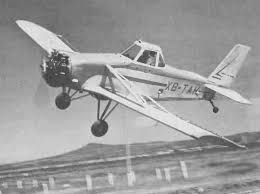
The Anahuac Tauro is a Mexican agricultural aircraft built in small numbers in the late 1960s and 1970s. The first prototype flew on 3 December 1968, with Mexican Type certification (the first type approved by Mexico's DGAC) following on 8 August 1969.[1] It was a low-wing braced monoplane of conventional configuration with fixed tailwheel undercarriage. The wing was of constant chord and had spray bars installed along its trailing edge.
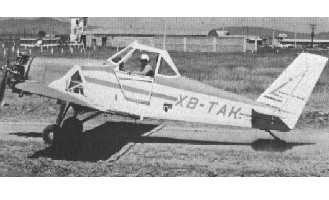
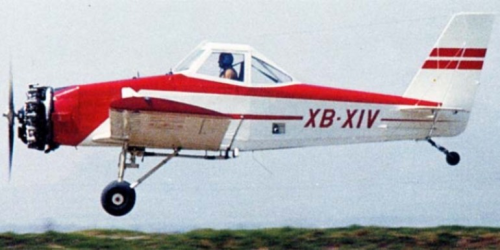
Variants
Tauro 300 - prototype and seven production examples with 300 hp R-755-A2M1 engine
Tauro 350 - four examples with 350 hp R-755-SM engine
Specifications (Tauro 350)
Data from Jane's All The World's Aircraft 1980-81 [1]
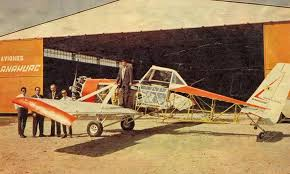
General characteristics
Crew: One
Capacity: 870 L (230 US Gallons) of liquid or 800 kg (1,764 lb) of dry chemicals
Length: 8.21 m (26 ft 11¼ in)
Wingspan: 11.44 m (37 ft 6½ in)
Height: 2.34 m (7 ft 8 in)
Wing area: 20.24 m² (217.9 ft²)
Airfoil: US 35B
Empty weight: 958 kg (2,112 lb)
Max. takeoff weight: 2,064 kg (4,552 lb)
Powerplant: 1 × Jacobs R-755-SM seven-cylinder radial engine, 261 kW (350 hp)
Performance
Never exceed speed: 225 km/h (121 knots, 140 mph)
Maximum speed: 193 km/h (104 knots, 120 mph)
Cruise speed: 137 km/h (74 knots, 85 mph) (econ cruise)
Stall speed: 68 km/h (36.5 knots, 42 mph)
Range: 375 km (202 nm, 233 mi)
Service ceiling: 5,790 m (19,000 ft)
Rate of climb: 4.3 m/s (850 ft/min)
https://www.revolvy.com/page/Anahuac-Tauro
https://docplayer.es/80373078-Secre...es-economicas-administrativas-y-sociales.html
Last edited:
pegasus
I really should change my personal text
- Joined
- 22 March 2019
- Messages
- 303
- Reaction score
- 208
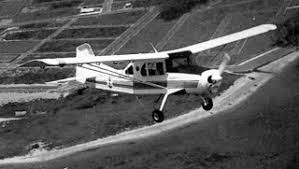
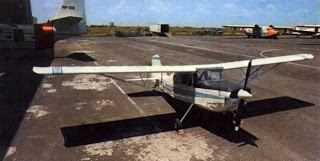
The Tonatiuh project was designated as CIAAC-7701, the first prototype started its construction in February 1978 in the Naval Hangar of the Mexico City international airport Benito Juarez.
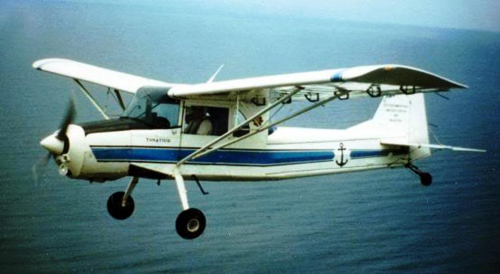
IPN Tonatiuh
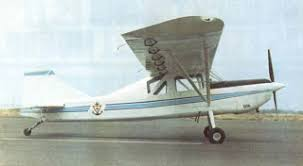
TONATIUH MX-1 plane - Mexico
The Tonatiuh MX-1 was designed by the Marina of Mexico (SEMAR) and by the Polytechnic Institute of National (IPN) the Higher School of Mechanical and Electrical Engineering (ESIME). The design work started in 1978, ending the construction of the first prototype in 1980, with an investment of nearly two million pesos. The first flight of the prototype was made on May 18, 1980, the first flight The first official flight on June 1 of the same year.
it was a single-engine airplane, with high wing and the tubular structure, which develops a speed of up to 195 km / h, can be used as a primary trainer for pilots, such as the aircraft and the environment. The Tanatiuh was a robust and simple aircraft, and it costed 35% less than its foreign equivalent.
For its wing profile they used another Mexican aircraft, designed and manufactured by national technicians Monterrey. However, the section of the wing was specifically designed for it, and although Bárcenas ribs, beams and tensioners B-01 were used, the cost modulation in this case was different.
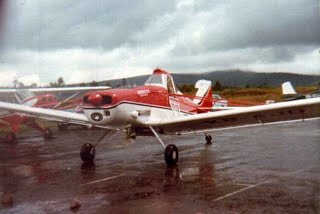
8 aircraft in total, of which 6 were acquired in 1982 by the Navy of Mexico. These devices were used in training, surveillance and liaison work until the mid-1990s.
From the last century, a four-seater version has been published, with a 235-hp engine. and a gross weight of 1,250 kg.
Technical data
Seats: 2
Length: 7 m
Spread: 10 m.
Cabin length: 1.69 m.
Cabin width: 2.10 m
Height of the floor to the wing: 2,13 m.
Empty weight: 350 kg.
Maximum takeoff weight: 450 kg.
Payload: 50 kg.
Distance for landing: 150 m.
Maximum speed: 195 km / h
Autonomy: 3.5 hours.
Engine: Lycoming of 150 hp.
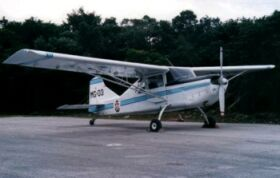
http://blogdepasm.blogspot.com/2009/07/avion-tonatiuh-mx-1-mexico.html
Last edited:
Hi Pegasus !
Thank you for your beautiful work on the various Latin America designs!
Would you know where I could find some (technical data such as dimensions) on the Bárcenas B-01 ag-plane? . I know it first flew in June 1973 but I have seen production totals seen reported as 11, 12 and even 50.
Thank you for your beautiful work on the various Latin America designs!
Would you know where I could find some (technical data such as dimensions) on the Bárcenas B-01 ag-plane? . I know it first flew in June 1973 but I have seen production totals seen reported as 11, 12 and even 50.
pegasus
I really should change my personal text
- Joined
- 22 March 2019
- Messages
- 303
- Reaction score
- 208
I will look for it, read this https://tesis.ipn.mx/bitstream/handle/123456789/12428/1877 2013.pdf?sequence=1&isAllowed=y it is a very technical work by the IPN it basically says there was another derivative, sadly another failed program, it was the Chac it has a very short introduction in English but it is worth to read it.Hi Pegasus !
Thank you for your beautiful work on the various Latin America designs!
Would you know where I could find some (technical data such as dimensions) on the Bárcenas B-01 ag-plane? . I know it first flew in June 1973 but I have seen production totals seen reported as 11, 12 and even 50.
next picture has the Chac built upon the Barcenas aircraft in white red and blue it is at the ESIME polytechnic
https://www.academia.edu/22115846/Proyecto_Aeromarmi-ESIME_Ticomán_desarrollo_integral_de_una_aeronave_utilitaria_fabricada_en_materiales_compuestos
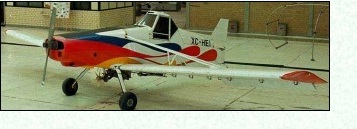
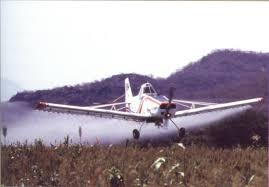
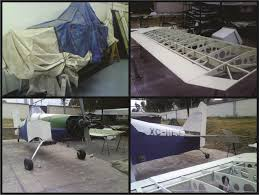
Technical data of the Chac Project
Fuselage type tubular Alascon two "I" beams in 6061-T6 aluminum, plywood ribs, duralumin tensioners, lined in aeronautic fabric Fiberglass fuel and fumigant tanks Lycoming 6-cylinder engine Model O-540 of 235 HP
Fixed pitch propeller for 235 HP motor with variable pitch for 260 HP motor
Maximum weight 1450 Kg
Empty weight including application equipment 800 Kg
Useful load 650 Kg
Hopper capacity 710 Liter
Pay rate to ½ fuel tank 512 Kg
Installed engine Lycoming 0-540 B2B5 335HP or Lycoming 0-540 BlA5 260 HP
number of aircraft built Three prototypes Construction period 1982-1983
source https://docplayer.es/80373078-Secre...es-economicas-administrativas-y-sociales.html
here an interesting article by a student of engineering
The teachers, on the other hand, came in contact with a reporter from the magazine Proceso. On March 25, at number 73 of the magazine, an article was published under the heading of "Obstruction of the Aeronautical Industry: Mexico bought from Brazil aircraft that were already manufactured here."
With so much activity on our part, or due to the inconvenient clauses of the binational contract, the announced purchase of the 40 IPANEMAs was not carried out. Only half a dozen were bought, as we later learned.
In September of that same year of 1978, my friend Sergio and I learned that a plane "Bárcenas B-01", a Mexican agricultural plane, had been assembled, in the workshop located in the Uruapan airport, and we got a companion Our inspector of the DGAC (General Directorate of Civil Aeronautics) will take us there to carry out the inspection and issue the airworthiness certificate.
We traveled all night and arrived at dawn. We stayed in a modest hotel and in the morning we headed to the airport.
The "Bárcenas" was an agricultural work plane designed by a Mexican, Eng. David Bárcenas Beutelspacher, of which about 50 airplanes were built. But already in the 80s its manufacture became more onerous and the construction workshop closed operations. The design of its wing profile became property of the IPN and was used in a modified version of the same airplane "Bárcenas", for the Mexican Navy as a basic training aircraft and aerial exploration, which was given the name "Tonatiuh" "
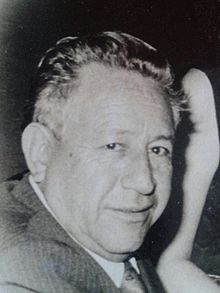 David Bárcenas Beutelspacher
David Bárcenas Beutelspacherhttp://zorrofiloso.blogspot.com/2009/03/primera-parte-al-iniciar-1978-cursando.html
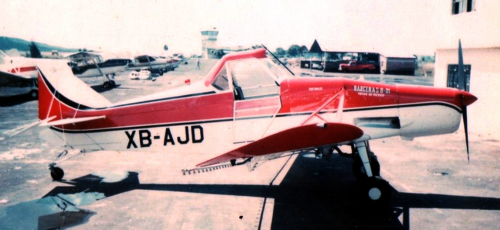
TECHNICAL DATA "Bárcenas B-01 Production Certificate No. 3 Issued by the General Directorate of Civil Aeronautics Motor
Lycoming o-540 Power 235 H.P.
Dimensions: Width11.0 m
Length7.50 m
Height2.75 m
Alarm area 17.6 m²
Maximum Weight1 450 Kg
Empty weight 750 Kg
Payload 750 Kg
Fumigant box capacity 710 liters
Gasoline capacity175 liters Charge for H. P.6.17 Kg / H. P.
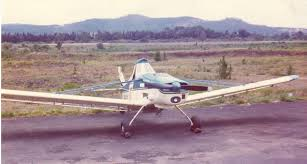
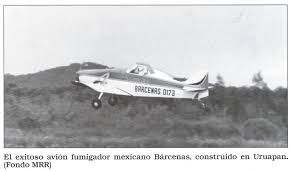
source https://docplayer.es/80373078-Secre...es-economicas-administrativas-y-sociales.html
Last edited:
pegasus
I really should change my personal text
- Joined
- 22 March 2019
- Messages
- 303
- Reaction score
- 208
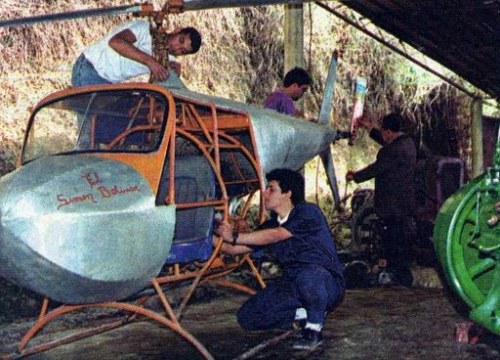
Vicente Zambrano, at the bottom in the tail rotor, with students from the University of Zulia, in April 1994. This project was not completed
In 1940 and 1965, José Vicente Zambrano, a self-taught mechanic and technologist (without formal studies of mechanics or technology), peasant of the mountain of Boconó, Edo. Trujillo, Venezuela, tested a plane of its design and manufacture, which according to the record written by his compadre Emiro A. Cáceres on December 8, 1965, flew successfully in 1965. Not satisfied with it, after the plane decided to start the construction of a helicopter.
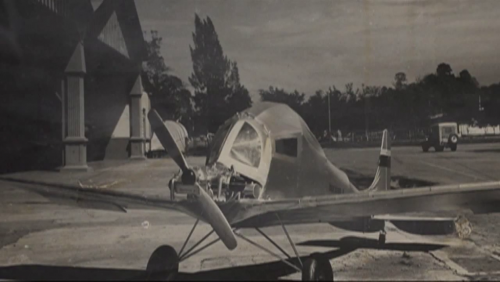
The 'Boconó I' in front of the hangars of the Aeronautical Museum of the FAV.
https://www.aviacioncivil.com.ve/el...o-de-venezuela-el-bocono-de-vicente-zambrano/
pegasus
I really should change my personal text
- Joined
- 22 March 2019
- Messages
- 303
- Reaction score
- 208
you are welcomed Walter, if I am honest two of the links are new for me, specially thisHi pegasus !
Thank you very much for the detailed info on the Barcenas B-01. You made me very happy.
source https://docplayer.es/80373078-Secre...es-economicas-administrativas-y-sociales.html
I am also glad you like this topic, the Barcenas is a very simple design and not really one of the famous aircraft in the world, but it is important in Mexico aeronautical engineering and aerospace manufacturing history, in Latin America we have many failed projects, both Mexico and Argentina had important rocket programs, Argentina advanced more while Mexico had a good start but never materialized beyond few basic programs
these are a few failed programs this picture shows some of the then called CONEE, the mexican NASA of the 1960s, we developed some rockets sonda
however the initial momentum was lost after the mid 1970s, the project would had been followed and continued today we would had satellite launching capability.
I mean is not that we have not technology, we have it but usually we do not have good policies
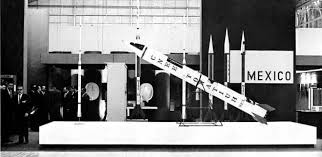
this picture has the Tonatiuh rocket sonda of the early 1970s
Very few of us know that Mexico has a more than interesting spatial past. On December 28, 1957, almost three months after the first artificial satellite was put into orbit, Sputnik 1 by the then Soviet Union, in San Luis Potosí the Physical I rocket was launched, an artifact weighing 8 kilograms and weighing 1.70. meters high, driven by solid propellant and reached two and a half kilometers in height. This effort, made by academics and students of the Faculty of Sciences of the Autonomous University of San Luis Potosí, UASLP, in what came to be called "Cabo Tuna", showed that in the country they had the ability to develop their own technology (1 ).
Later, between 1959 and 1960, the Ministry of Communications and Transportation (SCT), under the direction of Ing. Walter Cross Buchanan, launched two liquid propellant rockets, the SCT1 and SCT2, which reached heights of 4 and 25 kilometers, respectively. (two).
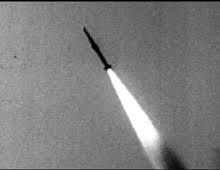
Mitl rocket during its launch
The design, construction and successful launching of liquid propellant rockets, in this case, liquid oxygen and alcohol, is not something simple, since it requires the mastery of a great variety of disciplines and the management of cryogenic liquids, among many other things. Mexican engineers in the 60's demonstrated the feasibility of building this type of vehicle with its own technology and few resources. These successes led to the creation on August 31, 1962, by decree of President Adolfo López Mateos, of the National Commission for Outer Space (CONEE), with the task of developing the research, exploitation and peaceful use of outer space. The CONEE carried out the research program of the upper atmosphere through 3 subprograms: development of sounding rockets, reception of signals from meteorological satellites and development of sounding balloons. Substantial progress was made in the three subprograms and among their greatest achievements was the manufacture of the Mitl rockets, a family of solid propellant rockets that reached more than 100 kilometers in height. In spite of all these successes, on March 11, 1977, in one of his first actions as president, the President of the Republic at that time, Lic. José López Portillo, decrees the dissolution of the CONEE.
https://haciaelespacio.aem.gob.mx/revistadigital/articul.php?interior=35
Last edited:
pegasus
I really should change my personal text
- Joined
- 22 March 2019
- Messages
- 303
- Reaction score
- 208
One of the most brilliant chapters in the Mexican aeronautical constructions was carried out by the most important airplane builder in Mexico, Eng. Ángel Lascuráin y Osio.
Graduated from the National School of Engineers in 1909, he was hired in 1918 in the National Workshops of Aeronautical Constructions (TNCA), where he collaborated with Francisco Santarini. Two years later he was appointed Chief of the TNCA, during this period Engineer Lascuráin stood out when designing and manufacturing the Series B, E Series, Sonora, Mexico and Avro - Anahuac aircraft. Under his direction the TNCA had a great development and growth.
Later he worked in the Juan F. Azcárate factory, where the Corsarios - Azcárate aircrafts were built. Later, he independently designed and built the Sport, Celia and Aura bimorts, where he demonstrated a great vision to get ahead of his time with the development of light twin-engined tourism and a twin-engine passenger, concepts in the 50's still not They had coined.
This series of articles will cover the stage in the legacy of Engineer Ángel Lascuráin, in which the two-engine Sport, Celia and Aura become independent, a neuralgic point in the history of Mexican aeronautical constructions, that if the destination has been presented Slightly different may well have been the resurgence of an aerospace industry in the country.
Once the construction of the Azcárate aircraft for the Military Aviation School was supervised, in 1930, Angel Lascuráin moved away from the aeronautical activities for a while, dedicated other businesses, but always dreamed of a very special aircraft and continued to prepare a revolutionary design where the maximum aerodynamic efficiency was achieved, making the fuselage of the airplane part of the sustaining group instead of a parasitic load as in most aircraft. The device would be the first twin engine made in Mexico and capable of being productive as a commercial aircraft in the conditions prevailing in Latin America: short and poorly prepared runways, large elevations of the terrain and little ground support.

Angel Lascuráin and Osio with the famous pilot Agustín Gutiérrez Peláez.
Engineer Lascuráin partnered with his old friend General Gustavo Salinas and got the support of the famous aviator Francisco Sarabia, who would co-finance the project, initially contributing the 65 hp Continental engines that would power the twin-engine Lascuráin-Salinas.
The beautiful and clean twin-engine, known by some as the "Sport", was built entirely of wood with a special coating of great smoothness, which was very similar to the current plastic materials, with a very light metallic green finish; the apparatus had a large wing surface, fixed tricycle landing gear and accommodation for four occupants in two separate cabins. The small twin-engine went back to the air in 1939, at the command of another legendary Mexican pilot, Agustín Gutiérrez Peláez "El Gato", with a surprising performance for a four-speed device of only 130 hp: 210 km / h of maximum speed and 19,500 feet of service ceiling. The twin-engine Lascuráin-Salinas had a cost of 18,002.78 pesos of 1939, including second-hand instruments for $ 153.40 and used propellers of $ 60, to which were added $ 3,599.50 of subsequent expenses; Sarabia had contributed $ 8,925, Lascuráin $ 9,403.88 and Salinas $ 3,273.40. Unfortunately, Sarabia died during the return of his historic flight to New York and he lost the support of this great man who planned to make good use of the twin-engine Lascuráin - Salinas.

By 1939, the twin-engine Lascuráin enjoyed a highly aerodynamic line. This was the first twin-engine designed and built in Latin America, known as the "Sport".




The elegant Lascuráin "Sport", in flight.
General Salinas, on his own, built another twin-engine based entirely on the Lascuráin design, although a little larger and equipped with inverted cylinder Menasco engines. This aircraft, apparently called "Salinas IV", served with the Mexican Air Force and was tested by Radamés Gaxiola, veteran of the Pacific War with the 201 Squadron. The last time this special plane was seen was when its remains were in the Fourth Maintenance Step of the FAM, at the end of the 1940s.

source https://vuela.com.mx/am/articulos/3678-los-bimotores-del-ing-angel-lascurain-primera-parte.html
for further read https://odiseo.com.mx/files/maciasnarro-2015-fuerzaaereamexicana.pdf
Graduated from the National School of Engineers in 1909, he was hired in 1918 in the National Workshops of Aeronautical Constructions (TNCA), where he collaborated with Francisco Santarini. Two years later he was appointed Chief of the TNCA, during this period Engineer Lascuráin stood out when designing and manufacturing the Series B, E Series, Sonora, Mexico and Avro - Anahuac aircraft. Under his direction the TNCA had a great development and growth.
Later he worked in the Juan F. Azcárate factory, where the Corsarios - Azcárate aircrafts were built. Later, he independently designed and built the Sport, Celia and Aura bimorts, where he demonstrated a great vision to get ahead of his time with the development of light twin-engined tourism and a twin-engine passenger, concepts in the 50's still not They had coined.
This series of articles will cover the stage in the legacy of Engineer Ángel Lascuráin, in which the two-engine Sport, Celia and Aura become independent, a neuralgic point in the history of Mexican aeronautical constructions, that if the destination has been presented Slightly different may well have been the resurgence of an aerospace industry in the country.
Once the construction of the Azcárate aircraft for the Military Aviation School was supervised, in 1930, Angel Lascuráin moved away from the aeronautical activities for a while, dedicated other businesses, but always dreamed of a very special aircraft and continued to prepare a revolutionary design where the maximum aerodynamic efficiency was achieved, making the fuselage of the airplane part of the sustaining group instead of a parasitic load as in most aircraft. The device would be the first twin engine made in Mexico and capable of being productive as a commercial aircraft in the conditions prevailing in Latin America: short and poorly prepared runways, large elevations of the terrain and little ground support.
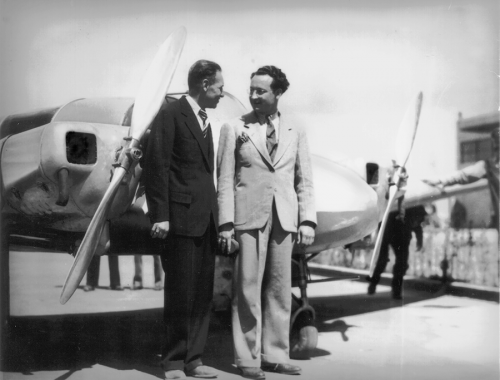
Angel Lascuráin and Osio with the famous pilot Agustín Gutiérrez Peláez.
Engineer Lascuráin partnered with his old friend General Gustavo Salinas and got the support of the famous aviator Francisco Sarabia, who would co-finance the project, initially contributing the 65 hp Continental engines that would power the twin-engine Lascuráin-Salinas.
The beautiful and clean twin-engine, known by some as the "Sport", was built entirely of wood with a special coating of great smoothness, which was very similar to the current plastic materials, with a very light metallic green finish; the apparatus had a large wing surface, fixed tricycle landing gear and accommodation for four occupants in two separate cabins. The small twin-engine went back to the air in 1939, at the command of another legendary Mexican pilot, Agustín Gutiérrez Peláez "El Gato", with a surprising performance for a four-speed device of only 130 hp: 210 km / h of maximum speed and 19,500 feet of service ceiling. The twin-engine Lascuráin-Salinas had a cost of 18,002.78 pesos of 1939, including second-hand instruments for $ 153.40 and used propellers of $ 60, to which were added $ 3,599.50 of subsequent expenses; Sarabia had contributed $ 8,925, Lascuráin $ 9,403.88 and Salinas $ 3,273.40. Unfortunately, Sarabia died during the return of his historic flight to New York and he lost the support of this great man who planned to make good use of the twin-engine Lascuráin - Salinas.
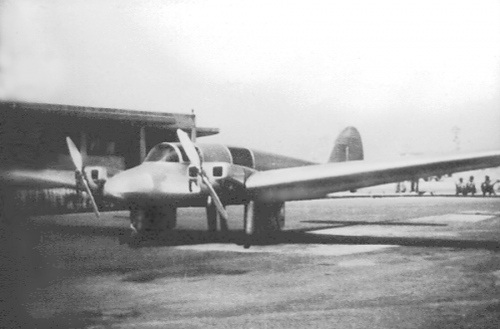
By 1939, the twin-engine Lascuráin enjoyed a highly aerodynamic line. This was the first twin-engine designed and built in Latin America, known as the "Sport".
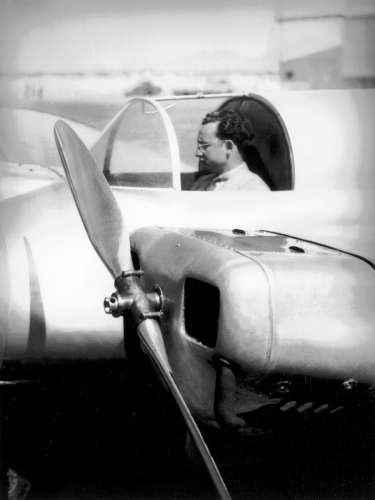
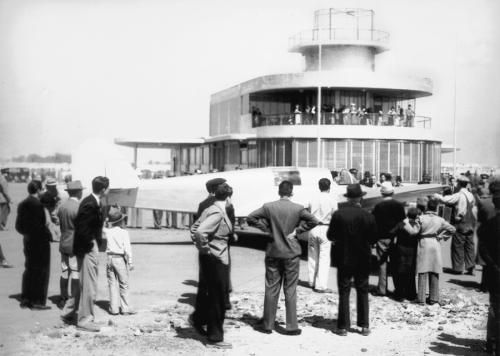
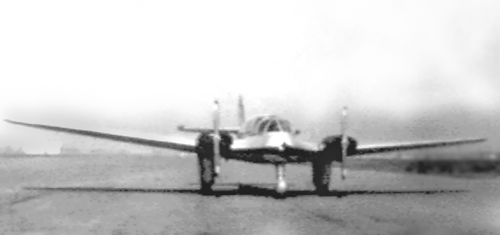
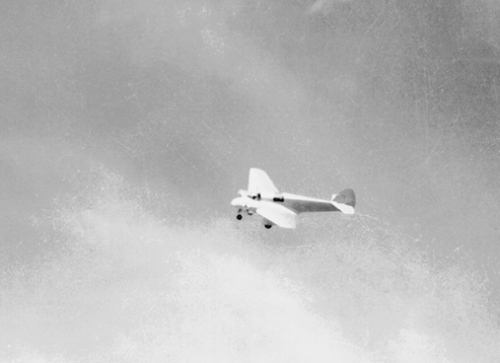
The elegant Lascuráin "Sport", in flight.
General Salinas, on his own, built another twin-engine based entirely on the Lascuráin design, although a little larger and equipped with inverted cylinder Menasco engines. This aircraft, apparently called "Salinas IV", served with the Mexican Air Force and was tested by Radamés Gaxiola, veteran of the Pacific War with the 201 Squadron. The last time this special plane was seen was when its remains were in the Fourth Maintenance Step of the FAM, at the end of the 1940s.
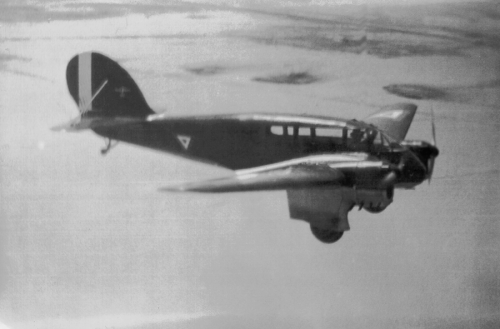
source https://vuela.com.mx/am/articulos/3678-los-bimotores-del-ing-angel-lascurain-primera-parte.html
for further read https://odiseo.com.mx/files/maciasnarro-2015-fuerzaaereamexicana.pdf
Last edited:
pegasus
I really should change my personal text
- Joined
- 22 March 2019
- Messages
- 303
- Reaction score
- 208
I hope you enjoy this video it is about the same Sport twin engine aircraft you can see a gallery of pictures of its manufactureHi pegasus!
Again wonderful info on the Lascurain twins.
I am very selfish and I hope that for future posts you also have the TT-5 twin (smaller Beech 18/C-45 lookalike) on your list.
you can see the Sport there
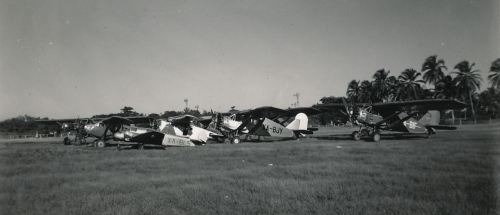
aircraft "Celia" and Salinas Built on the basis of Lascurain's plans of the Sport
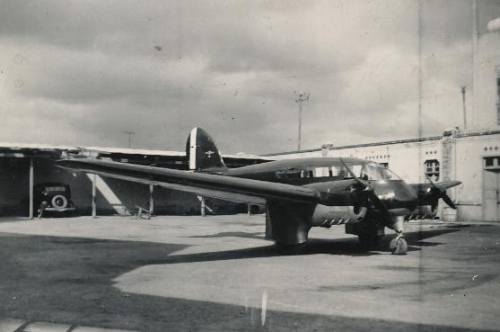
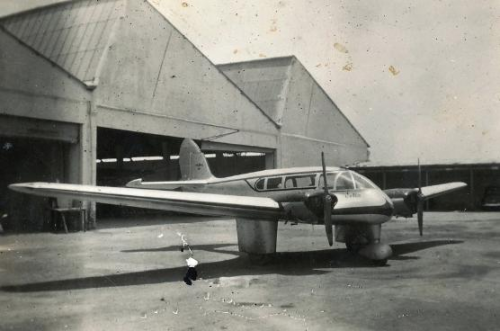
source http://www.elbiplano.com/Lascurain.html
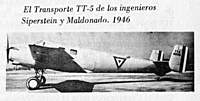
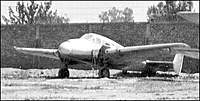
TT-5 designed by Maldonado and Siperstein in 1946 however let me tell you the author of that post does not think it is the real TT-5
sourcehttps://www.rcgroups.com/forums/showthread.php?1075164-Museo-Virtual-de-la-Aviación-Mexicana/page8
Last edited:
pegasus
I really should change my personal text
- Joined
- 22 March 2019
- Messages
- 303
- Reaction score
- 208
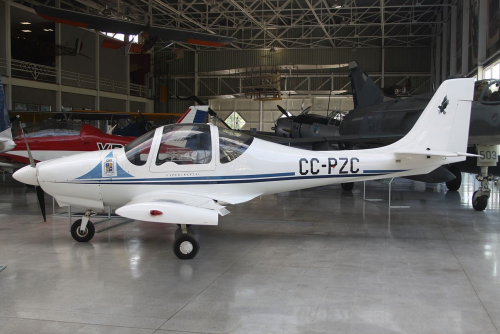
The ECH-02 Ñamcu, is a prototype of light aircraft, two-seater, single-engine, low-wing and fixed tricycle landing gear, developed and built by ENAER-Chile, during the 1990s. Manufacturer ENAER-Chile
First flight May 8, 1989
Withdrawn 2002
Production status completed
Production 1989-2001
No. built 5 prototypes for further read http://all-aero.com/index.php/contactus/45-planes-d-e-f/3298-enaer-namcu-eaglet
Last edited:
pegasus
I really should change my personal text
- Joined
- 22 March 2019
- Messages
- 303
- Reaction score
- 208
well Lascurain was an aircraft designer to the level of most of his peers from 1910 to 1957, but sadly those were his last projectsAmazing work Pegasus,
and can I ask you that,the Lascurain designed Aura,Celia and XB-1,was there any more unknown aircraft or Projects to
this company ?.
the Series B of 1920 was built under his direction
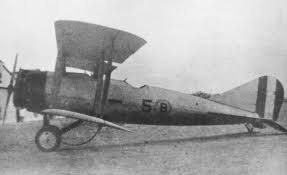
Later he built the 5-E-132 in 1922, which was pretty advanced for the time

these two projects were while he was the TNCA main designer and director which was the mexican national aerospace factory
the Aura was his last project
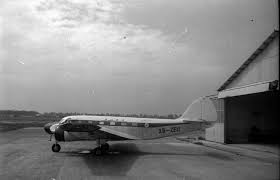
The Mexico of 1920s was more or less advanced in aerospace industry in fact in 1917
we had tanks of our own production, something important to mention it was the first tank build outside Europe even before the USA had tanks
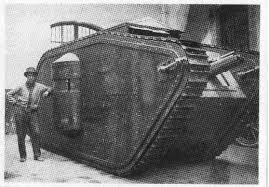 this is the Salinas Tank of 1917 that had an engine based upon the engine of the Series A aircraft designed in Mexico by Guillermo Villasana.
this is the Salinas Tank of 1917 that had an engine based upon the engine of the Series A aircraft designed in Mexico by Guillermo Villasana.the Series A aircraft
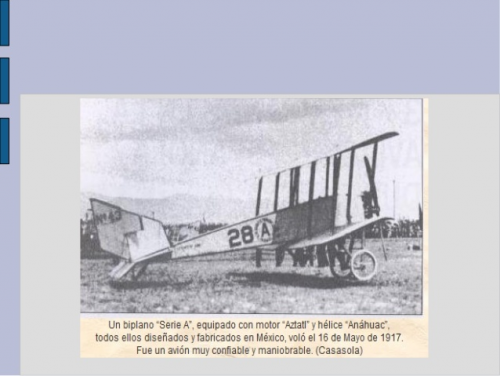
this aircraft had even the engine designed and built in Mexico, however the reality is they never went beyond a few examples, Mexico failed because internal and external factors like Argentina.
Lascurain died in the accident of the Aura and with him the last serious attempt to develop a first class aviation industry.
if you look at the Sport it already showed wing fuselage blending, the Sport flew in 1939, 5 years ahead of the XP-67
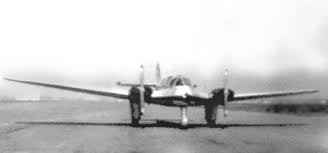
similar aircraft of the time was the McDonnell XP-67 Moonbat that flew in 1944
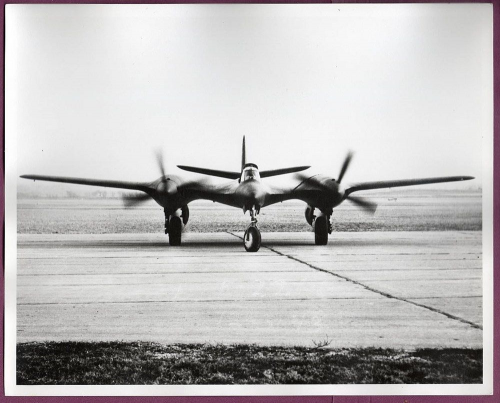
So he was more or less an important designer born in the wrong country, well born in a country with unwittingly foolish politicians
Last edited:
pegasus
I really should change my personal text
- Joined
- 22 March 2019
- Messages
- 303
- Reaction score
- 208
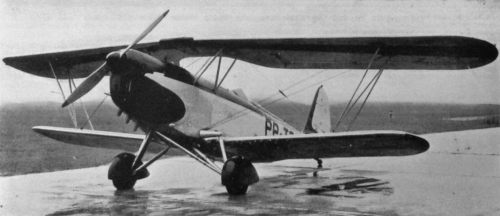
MUNIZ M-7 is an airplane for two crew, destined to the primary training of pilots. Designed by Major Brazilian Army Antônio Guedes Muniz, it was the first model manufactured in series in Brazil. The prototype was built in the Aeronautical Central Park (Campo dos Afonsos) and the following aircraft at the Brazilian Aircraft Factory, in Viana Island (Rio de Janeiro).
The Military Aviation School, which operated here in Campo dos Afonsos, used 11 MUNIZ M-7 airplanes, out of a total of 28 produced from 1937 to 1941, with the remaining 17 flying airplanes. The specimen on display, registration number "13" (manufactured in 1938), flew in airstrips with the prefix "PP-TEN", from 1941 to 1967.
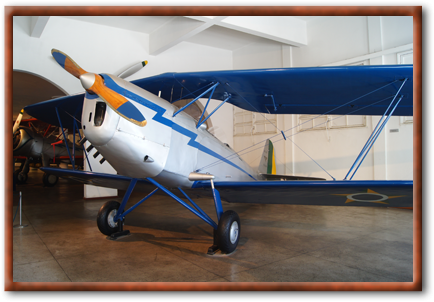
http://www2.fab.mil.br/musal/index.php/anvs/338-muniz-m7
The AMT-100 is a two-seater, low-wing, retractable, three-position, variable-pitch Hoffmann propeller for pilot training and sport flying. It is similar to the AMT-200 "Super Ximango" except for the use of a Limbach L 2000 EO1 80 hp engine. Despite being a plane designed for leisure flights and not for circumnavigations, this model of motoplanador proved (in an unprecedented flight of 55,000 km around the globe in 2001) that deserves our respect. He was the only motoplanter to make the South Atlantic ocean crossing.
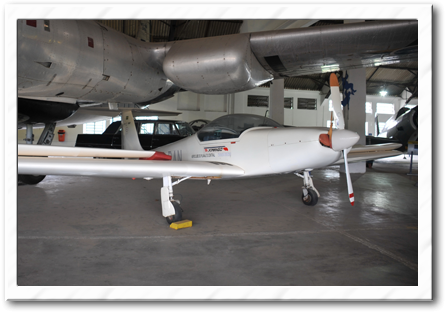
Technical specifications
Manufacturer: AEROMOT Indústria Mecânico-Metalúrgica Ltda - Brazil
Engine: Limbach L 2000 EO1 of 80 hp, 4 horizontal cylinders opposed
Military Designation: -
Length: 7,89 m
Wingspan: 17.47 m
Height: 1,93 m
Weight: 600 kg
Cruising Speed: 190 km / h
Range: 1,380 km
http://www2.fab.mil.br/musal/index.php/anvs/367-ximango
The Embraer EMB-121 is a turbo-propeller aircraft with capacity for 2 crew and 9 passengers, destined for regional transport. Its design was based on the EMB-110 "Bandeirante", with the same type of wings and motors, and was used in the development of the EMB-120 "Brasília" project. It flew for the first time on October 10, 1976 and a modified version (EMB-121A1 Xingu II) was produced from 1981. Embraer produced 106 units by 1987, of which 51 were exported.
The Brazilian Air Force operated six VU-9 "Xingu" aircraft from 1978 to 2010, in transportation missions of authorities, and in 1983 these were modified to the "Xingu II" standard. The copy on display (registration number FAB 2654) was deactivated in 2010 and incorporated into the collection of the Aerospace Museum on August 04, 2011.
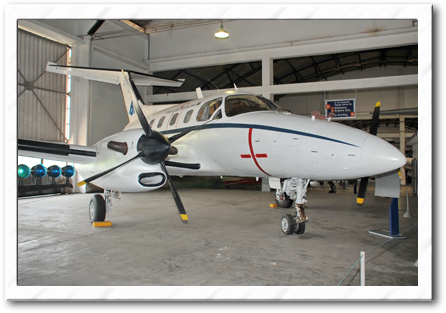
Technical specifications
Manufacturer: Empresa Brasileira de Aeronáutica S.A. - EMBRAER - Brazil.
Engine: 2 turbo propellers Pratt & Whitney PT6A-28 for 680 s.h.p.
Military Descent: VU-9
Length: 12.25 m
Wingspan: 14.45 m
Height: 4,74 m
Weight: 3,500 kg.
Maximum Speed: 450 km / h
range: 2,352 km.
http://www2.fab.mil.br/musal/index.php/anvs/303-xingu
The IPT-16 is a high performance experimental aircraft intended for flight trials. It has a wooden structure and capacity for a crew member. The Surubim began to be built in 1949, at the private initiative of engineer Joseph Kovacs, in order to create an airplane for a newly acquired Hirth engine at a depot in Campo de Marte, São Paulo. Working with engineer Silvio de Oliveira, the airplane project began to take shape and was christened "Satan" after a few months. However, the project was paralyzed and resumed (in 1953) by the Institute of Technological Research (IPT), which concluded and renamed IPT-16 "Surubim". The inaugural flight was performed by the South American Champion of Aerial Acrobatics, Mr. Alberto Bertelli, on September 17, 1959.
The specimen on display is unique and had its retractable landing gear replaced by a fixed landing gear in a major revision (in 1979), in the city of Rio Claro, where it was used in the training of acrobatic pilots until its deactivation, in 1989, when it was delivered to the Aerospace Museum.
Technical specifications
Manufacturer: Instituto de Pesquisas Tecnológicas de São Paulo - Brazil
Engine: Hirth HM 506A 160 hp, 4 cylinders in inverted line
Military Descent: -
Length: 7,0 m
Wingspan: 7.70 m
Height: 2,10 m
Weight: 440 kg
Max Speed: 340 km / h
Range: 1,050 km
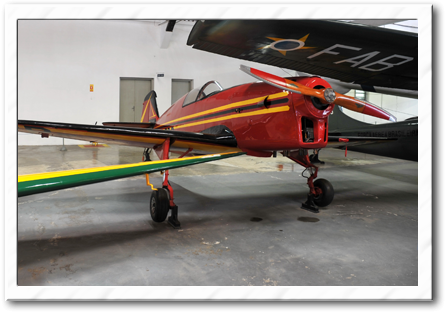
http://www2.fab.mil.br/musal/index.php/anvs/326-ipt-16
Last edited:
pegasus
I really should change my personal text
- Joined
- 22 March 2019
- Messages
- 303
- Reaction score
- 208
those are photos from a museum, it is a western aircraft, I have no time but i will check laterIn the photo of the AMT 100, it is standing below a large metal airplane with a saddle tank in the wing leading edge. Does any one have an idea what aircraft that might be?
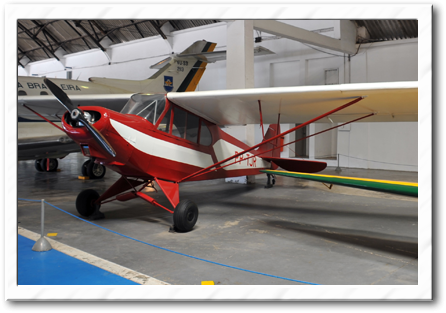
CAP 4A is a two-person aircraft used for primary training. It is a development of the EAY-201 "Ypiranga" (EAY - Empresa Aeronáutica Ypiranga) which flew for the first time in 1935. In 1943, the prototype and manufacturing rights of EAY-201 were acquired by Companhia Aeronáutica Paulista, which perfected the project and renamed it CAP-4 "Paulistinha". This company produced a total of 777 model CAP-4A airplanes, from 1943 to 1948.
The copy on display (registration number "PP-TJR") flew in aeroclubs until being deactivated in 1970.
Technical specifications
Manufacturer: Companhia Aeronáutica Paulista - Brazil
Motor: Franklin 65 hp, 4 horizontal cylinders opposite
Military Designation: -
Length: 6,65 m
Wingspan: 10.1 m
Height: 1.95 m
Weight: 320 kg
Max Speed: 155 km / h
Range: 500 km
http://www2.fab.mil.br/musal/index.php/anvs/370-paulistinha
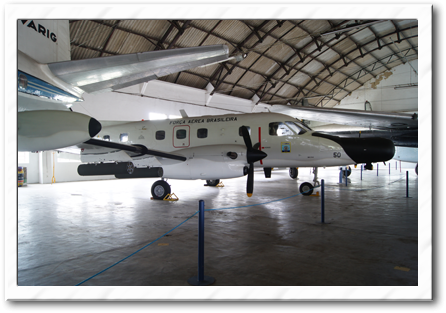
The EMBRAER 111 is an airplane for 5 crew, destined for anti-submarine operations and maritime reconnaissance missions. The first series-produced EMB 111 made its inaugural flight in August 1977. On April 11, 1978, the first delivery of three units (from a total of 12 aircraft of the first order) to the 1st Squadron of the 7th Aviation Group , located in Salvador, Bahia. In total, 29 aircraft were built, 12 P-95A and 10 P-95B for the Brazilian Air Force, 6 P-95A for the Chilean Navy and a P-95A for Gabon. During the Falklands War, Armada Argentina used two P-95A of the Brazilian Air Force, under contract of rent.
The Brazilian Air Force used the Bandeirulha (nickname received in the Air Force) in the following Aviation Groups: 1º / 7º GAV - Squadron Orugan - Salvador (BA) and 4th / 7th GAV - Squadron Cardinal - Santa Cruz (RJ), and (FAB 7050) belonged to the 4º / 7º GAV, and it was also used in the 2nd / 7th GAV - Phoenix Squadron - Florianópolis (SC) and in the 3rd / 7th GAV - Squadron Neptune - Belém (PA) where it flew until being deactivated in 2011. It arrived at the Aerospace Museum in 2013, where it was restored and incorporated in the same year.
Technical specifications
Manufacturer: Empresa Brasileira de Aeronáutica S.A. - EMBRAER - Brazil
Engine: 2 turbo propellers Pratt & Whitney PT6A-34 from 750 s.hp
Military Descent: P-95A
Length: 14.91 m
Wingspan: 15.95 m
Height: 4,83 m
Weight: 11,816 kg (ER version) and 11,808 kg (LR version)
Max Speed: 393 km / h
Range: 2,945 km
Weapon: 4 points under the wings for 70mm SBAT rocket launchers (with seven rockets on each launcher)
http://www2.fab.mil.br/musal/index.php/anvs/302-p-95a
Last edited:
In the photo of the AMT 100, it is standing below a large metal airplane with a saddle tank in the wing leading edge. Does any one have an idea what aircraft that might be?
Vickers V789D (VC-90) Viscount, used as presidential aircraft from 1958 to 1987.
Some pictures of her, including ones which show the saddle tanks: http://tecnodefesa.com.br/o-dia-em-que-o-cafona-saiu-para-tomar-um-sol-no-musal/
pegasus
I really should change my personal text
- Joined
- 22 March 2019
- Messages
- 303
- Reaction score
- 208
FMA IA-60 a early Pampa concept
The IA-60 FMA was a blueprint for an advanced training and tactical attack aircraft, developed at the former Military Aircraft Factory (today FADEA) by a team of approximately 18 engineers led by the Head of the Engineering Department of the FMA, at that time, Vice-engineer, Aeronautical Engineer Hector Eduardo Ruiz ..
It was foreseen that both versions of the aircraft shared the fixed armament, armor and equipment of control of shot, and the conversion of the version of advanced training to the one of tactical attack, will be realized quickly with the positioning of the under wing supports
The project began to take shape in 1975. The planned Calendar included, among others, the following goals within engineering tasks:
- Beginning of Engineering Tasks in May of 1975.
- Presentation of the Mockup in August 1975.
- First glider flight in February 1976
- Start-up and shooting trials in December 1976
- First prototype flight between February and March 1977
These goals were perhaps too optimistic for the capacity and resources available to the FMA at that time. The truth is that the IA-60 did not go beyond the wind tunnel testing stage and the project was canceled sometime between 1977 and 1979.
The reasons for this cancellation are not entirely clear and there are several versions about it, one is that the project was too expensive and complex for the FMA, another version is that the exhaustive aerodynamic tests of the IA-60 in the wind tunnel were not satisfactory for the chosen configuration, to which the change in the requirements of the future advanced trainer of the FAA was added, which would eventually lead to the advanced trainer IA-63 Pampa, designed and developed in collaboration with Dornier.
Description
The IA-60 was a cantilever high-wing monoplane, T-empennage, single-engine, with tricycle landing gear and metal construction (aluminum, magnesium and steel alloys).
The engine selected to propel it was the Rolls Royce Turbomeca Adour RT 172-26 of 3,640 kg of thrust with afterburning (15 minutes) and 2,400 kg without afterburning and at sea level (30 minutes).
Cabin
The two pilots were accommodated in a pressurized cabin 3 m long and 0.90 m wide. The configuration was tandem in tandem and it was planned to equip it with ejector seats zero - zero Martin Baker MKPA06 or MK10 equipped with spurs to break the individual transparent domes, built of Plexiglas. The rear seat was raised 35 cm from the front to give the instructor more visibility.
The armor for the attack version consisted of the cabin floor and the windshield, both capable of withstanding impacts of 7.62 mm projectiles fired from a distance of 150 m.
Both pilots would have a gyroscopic sight of the Ferranti ISIS F 195 type for air-to-air and air-to-ground shots. The Ferranti ISIS F 195 system consisted of the TF 95 viewer, the TF 95 control unit and the T 15 selector unit.
The firing radar consisted of the Bendix ANWE-1 with launch capability from multiple rackets located on each pylon with intervals greater or less than those permitted by them.
Armament
The fixed armament consisted of two 30 mm DEFA cannons equipped with 300 cartridges and with a firing rate of 1200 to 1500 dpm, located in the internal ventral section of the fuselage.
The IA-60 had five external pylons. The planned ventral pylon was the ALKAN PM3 with a maximum load capacity of 1,000 kg. The four undercarriages were the ALKAN T-620 with a maximum individual load of 500 kg.
The combined load of bombs and rockets was 1,890 kg. The portable pumps were the PG from 115 kg to 500 kg and rockets of various types and calibers such as the T-10 and 2.75 "or 5"
For a typical attack mission the IA-60 carried full ammunition of cannons, 2 400-kg bombs and 8 bombs of 115 kg or 8 LAU-60 rockets with a total of 152 rockets FFAR 2.75 ".
In addition to the offensive loads or in combination with them, the pylons could carry supplementary tanks, cartridge launchers, photo pods, pod with machine guns for training, launches training bombs, multiple launchers TER or ALKAN and a pod with a 30 mm DEFA cannon ( one per wing).
Variants
The IA-60 should have entered into service with the FAA in advanced training and tactical attack versions. It was foreseen that both versions of the aircraft shared the fixed armament, armor and equipment of control of shot, and the conversion of the version of advanced training to the one of tactical attack, will be realized quickly with the positioning of the under wing hard points
Fuel tanks
The aircraft had an integral wing tank and an internal fuselage tank.
The latter would be of the self-sealing type and would contain the collector tanks of the normal and auxiliary system. Both systems allowed the inverted flight for 30 seconds.
The auxiliary system powered by the self-sealing tank was able to ensure the flight at cruising power for 30 minutes.
FMA TECHNICAL SPECIFICATIONS IA-60
OVERALL DIMENSIONS
Height from the ground to the Vertical tail tip: 5,085 m
Length: 12,923 m
WINGS
Width: 10.52 m
wing Area Surface: 22.73 m2
Profile root wing: NACA 652211


http://aero-arg.blogspot.com/2013/11/proyecto-ia-60-fma.html
https://www.taringa.net/+info/fma-ia-60-el-entrenador-que-no-fue_13ked7



The IA-60 FMA was a blueprint for an advanced training and tactical attack aircraft, developed at the former Military Aircraft Factory (today FADEA) by a team of approximately 18 engineers led by the Head of the Engineering Department of the FMA, at that time, Vice-engineer, Aeronautical Engineer Hector Eduardo Ruiz ..
It was foreseen that both versions of the aircraft shared the fixed armament, armor and equipment of control of shot, and the conversion of the version of advanced training to the one of tactical attack, will be realized quickly with the positioning of the under wing supports
The project began to take shape in 1975. The planned Calendar included, among others, the following goals within engineering tasks:
- Beginning of Engineering Tasks in May of 1975.
- Presentation of the Mockup in August 1975.
- First glider flight in February 1976
- Start-up and shooting trials in December 1976
- First prototype flight between February and March 1977
These goals were perhaps too optimistic for the capacity and resources available to the FMA at that time. The truth is that the IA-60 did not go beyond the wind tunnel testing stage and the project was canceled sometime between 1977 and 1979.
The reasons for this cancellation are not entirely clear and there are several versions about it, one is that the project was too expensive and complex for the FMA, another version is that the exhaustive aerodynamic tests of the IA-60 in the wind tunnel were not satisfactory for the chosen configuration, to which the change in the requirements of the future advanced trainer of the FAA was added, which would eventually lead to the advanced trainer IA-63 Pampa, designed and developed in collaboration with Dornier.
Description
The IA-60 was a cantilever high-wing monoplane, T-empennage, single-engine, with tricycle landing gear and metal construction (aluminum, magnesium and steel alloys).
The engine selected to propel it was the Rolls Royce Turbomeca Adour RT 172-26 of 3,640 kg of thrust with afterburning (15 minutes) and 2,400 kg without afterburning and at sea level (30 minutes).
Cabin
The two pilots were accommodated in a pressurized cabin 3 m long and 0.90 m wide. The configuration was tandem in tandem and it was planned to equip it with ejector seats zero - zero Martin Baker MKPA06 or MK10 equipped with spurs to break the individual transparent domes, built of Plexiglas. The rear seat was raised 35 cm from the front to give the instructor more visibility.
The armor for the attack version consisted of the cabin floor and the windshield, both capable of withstanding impacts of 7.62 mm projectiles fired from a distance of 150 m.
Both pilots would have a gyroscopic sight of the Ferranti ISIS F 195 type for air-to-air and air-to-ground shots. The Ferranti ISIS F 195 system consisted of the TF 95 viewer, the TF 95 control unit and the T 15 selector unit.
The firing radar consisted of the Bendix ANWE-1 with launch capability from multiple rackets located on each pylon with intervals greater or less than those permitted by them.
Armament
The fixed armament consisted of two 30 mm DEFA cannons equipped with 300 cartridges and with a firing rate of 1200 to 1500 dpm, located in the internal ventral section of the fuselage.
The IA-60 had five external pylons. The planned ventral pylon was the ALKAN PM3 with a maximum load capacity of 1,000 kg. The four undercarriages were the ALKAN T-620 with a maximum individual load of 500 kg.
The combined load of bombs and rockets was 1,890 kg. The portable pumps were the PG from 115 kg to 500 kg and rockets of various types and calibers such as the T-10 and 2.75 "or 5"
For a typical attack mission the IA-60 carried full ammunition of cannons, 2 400-kg bombs and 8 bombs of 115 kg or 8 LAU-60 rockets with a total of 152 rockets FFAR 2.75 ".
In addition to the offensive loads or in combination with them, the pylons could carry supplementary tanks, cartridge launchers, photo pods, pod with machine guns for training, launches training bombs, multiple launchers TER or ALKAN and a pod with a 30 mm DEFA cannon ( one per wing).
Variants
The IA-60 should have entered into service with the FAA in advanced training and tactical attack versions. It was foreseen that both versions of the aircraft shared the fixed armament, armor and equipment of control of shot, and the conversion of the version of advanced training to the one of tactical attack, will be realized quickly with the positioning of the under wing hard points
Fuel tanks
The aircraft had an integral wing tank and an internal fuselage tank.
The latter would be of the self-sealing type and would contain the collector tanks of the normal and auxiliary system. Both systems allowed the inverted flight for 30 seconds.
The auxiliary system powered by the self-sealing tank was able to ensure the flight at cruising power for 30 minutes.
FMA TECHNICAL SPECIFICATIONS IA-60
OVERALL DIMENSIONS
Height from the ground to the Vertical tail tip: 5,085 m
Length: 12,923 m
WINGS
Width: 10.52 m
wing Area Surface: 22.73 m2
Profile root wing: NACA 652211
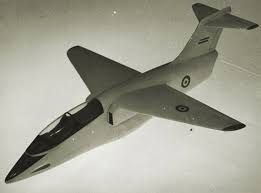
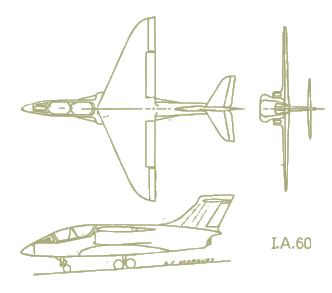
http://aero-arg.blogspot.com/2013/11/proyecto-ia-60-fma.html
https://www.taringa.net/+info/fma-ia-60-el-entrenador-que-no-fue_13ked7
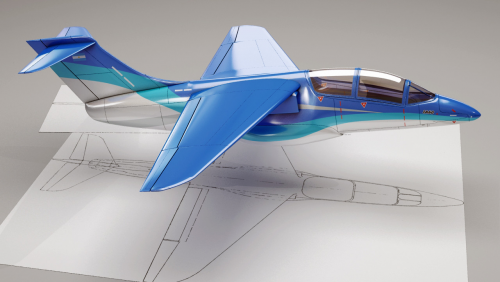
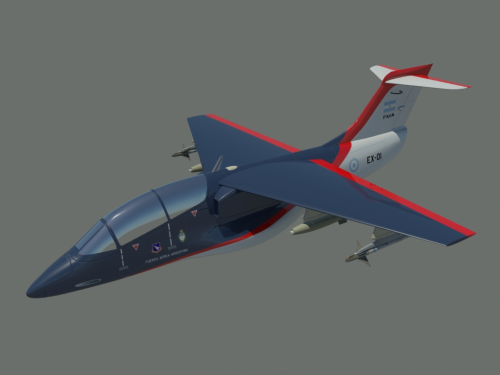
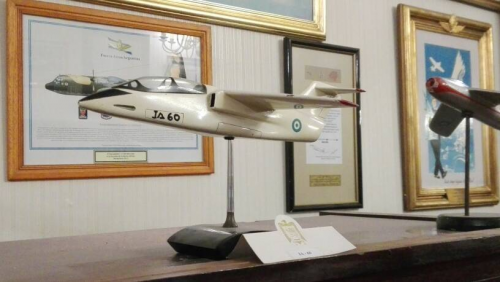
Last edited:
pegasus
I really should change my personal text
- Joined
- 22 March 2019
- Messages
- 303
- Reaction score
- 208
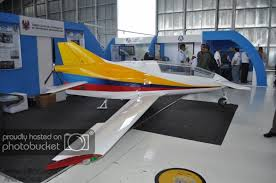
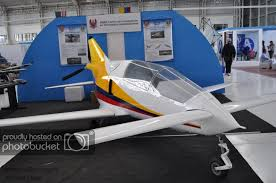
CITA (Center for Aerospace Technology Research), of the Colombian Air Force have started projects of institutional interest, standing out in the design of military aircraft the realization of a prototype in composite materials of a single-seat aerobatic airplane called FAC X-001 for which the most advanced technology tools have been used in computer programs specialized in the design of aircraft, which have allowed to lay the foundations for the creation of the school of knowledge with the official teachers and students of the Institution.
First manned aircraft of the Colombian air force made with composite materials.
https://www.taringa.net/+info/fuerza-aerea-colombiana-avion-fac-x-001_131f26
pegasus
I really should change my personal text
- Joined
- 22 March 2019
- Messages
- 303
- Reaction score
- 208
The Cicaré CH-3 Hummingbird was the third helicopter designed and built by Argentinean engineer Augusto Cicaré. Its design began in August 1973 and was completed in 1974. This helicopter began to develop through a contract with the Argentine Air Force in order to obtain an aircraft useful for training and agriculture.

Cicaré Ch-1


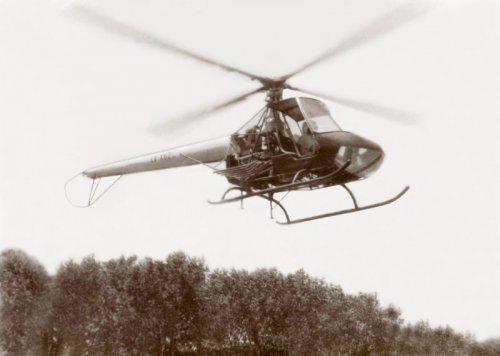
Cicaré Ch-1
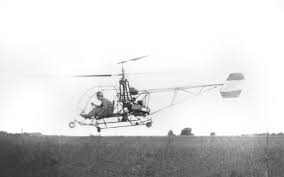
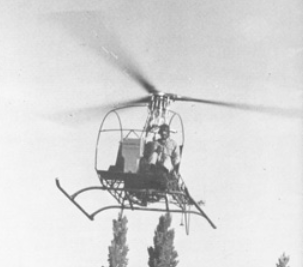
Last edited:
pegasus
I really should change my personal text
- Joined
- 22 March 2019
- Messages
- 303
- Reaction score
- 208
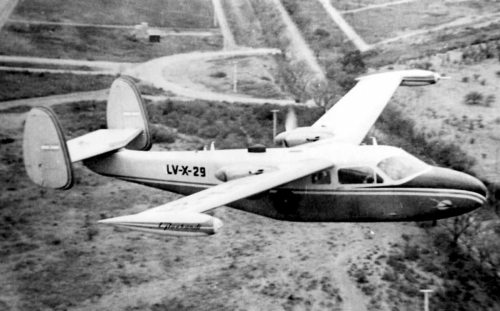
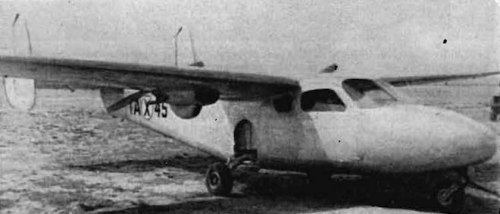
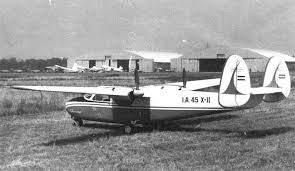
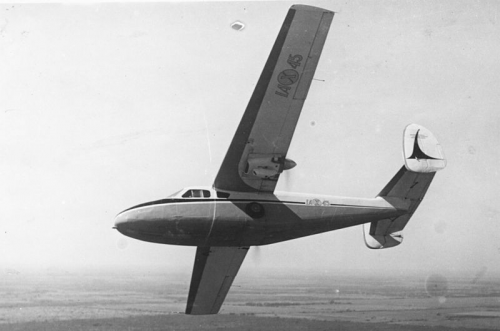
This Argentine aircraft is a twin-engine aircraft for executive use, with a particularity: it carried the power plants on the vanishing trailing edge of the wings (design by Eng. Elaskar); two engines LYCOMING 0-320 of 150 HP, driving HARTZELL metallic propellers twin blades of variable step and constant speed; later it was equipped with power plants LYCOMING 0-360 more powerful four-cylinder opposed with a power of 180 HP. The first prototype flew on September 23, 1957, and on November 15, 1960 with the designation of I.A. 45-X-II flown by the second piloted by Captain Roberto Starc.
Fuel capacity 400 l in two wing tanks; wing high cantilever with profile NACA 23016; metallic fuselage of semi-monocoque construction. Cantilever empenaje with double drift, with mobile surfaces entangled; Retractable tricycle landing gear, main wheels that fold in the fuselage, hydro-pneumatic damping and hydraulic retraction. Cabin conditioned for pilot, co-pilot and three passengers, or pilot and five passengers, or pilot with two stretchers and a nurse. Dual controls and cabin of 4 m³.
https://www.taringa.net/+info/avion-i-a-45-querandi_139k6u
DINFIA IA 45 Querandi:
"The elegant little Argentine plane sunk into oblivion"
Since the setting up of the Fábrica Militar de Aviones (FMA) in 1927, the history of the Argentine aviation industry has been punctuated by the development of original aircraft, most of which have unfortunately not exceeded the experimental threshold or that of the manufacture of more than a dozen devices. The promising and elegant twin-engine business AI 45 Querandi illustrates the difficulties of this industry, battered by the political and economic instability of Argentina for most of the 20th century.
Wanting to diversify its activities towards the civil aviation market, the Fábrica Militar de Aviones had developed and flew the single-engine FMA 20 El Boyero in 1940, but its entry into production was suspended to focus on the manufacture of aircraft military despite the neutrality displayed by Argentina until 1944. Referring again to the civilian market, the FMA meanwhile renamed Instituto Aerotécnico (IA), launched in the 1950s the development of the twin engine IA 45 Querandi and the single-engine IA 46 Ranquel. The name Querandi chosen for IA 45 is that of an indigenous people living in the pampas, vast Argentine plain.
Designed under the direction of José F. Elaskar, the IA 45 Querandi prototype made its first flight on 23 September 1957, under the command of pilot Pedro L. Rosell. The aircraft manufacturer had again changed its name in 1956, becoming the Dirección Nacional de Fabricación e Investigación Aeronáutica (DINFIA). Made entirely of metal, and with a very neat appearance, the Querandi was aimed at the business jet market. Powered by two 4-cylinder Lycoming O-320 engines with a unit power of 150 HP, these were installed on the trailing edges of the wing in a propulsion configuration, thus reducing noise for the passengers. Being able to carry four passengers in addition to the pilot, the aircraft could also be fitted out as ambulance aircraft for medical evacuations. It became clear, however, that the limited carrying capacity of the aircraft would be a handicap, and an improved version only made its first flight in 1960. Equipped with more powerful Lycoming O-360 engines and a refitted cabin, the IA 45B could accommodate an additional passenger.
Faced with the lack of interest in the civil market already dominated by American aircraft occupying the same niche, such as the Aero Commander and the Apache Piper, the DINFIA turned to the Fuerza Aérea Argentina who preferred to purchase Commander aircraft. The DINFIA had little more success with the air component the Army of Argentina who opted for his side for Piper Apache.
The only two copies of the elegant DINFIA Querandi, however, escaped the scrap and ended their career as jets in the Fuerza Aerea Argentina and in the Spartan colors of Ejército Argentino. Today, few remember this elegant little Argentinian plane since no copy has been preserved and very few images are accessible.
https://www.avionslegendaires.net/avion-militaire/dinfia-ia-45-querandi/
pegasus
I really should change my personal text
- Joined
- 22 March 2019
- Messages
- 303
- Reaction score
- 208
I am trying to start conversations, any way there are not many projects, Mexico has less than 20 aircraft, Argentina no more than 35 or 45 projects and Brazil maybe 40-50 projects we have very few projects , for example after 1945 in Mexico we have no more than 8 projects including the Pegasus P-400T, Argentina has also very few projects after 1970, most aircraft were built in few numbers for example the AAMSA Quail a license of the Callair A-9 Aero commander, this in fact is probably the aircraft that has the highest numbers built in Mexico 100+.Hi Pegasus,
please focus on Projects or little known prototypes only in this section,and thanks.
Another thing is there are not many pictures, at least online you will not find many because they built few aircraft and few pictures have survived
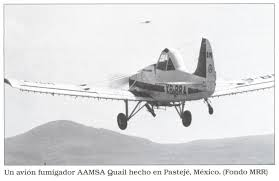
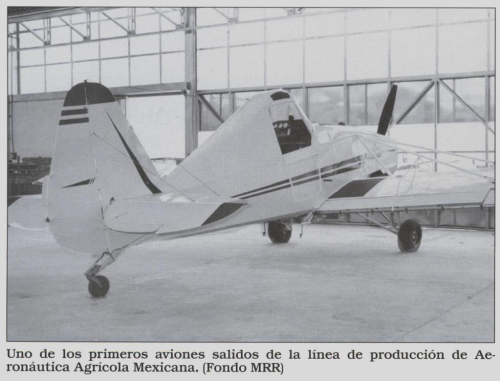
- Joined
- 3 September 2006
- Messages
- 1,476
- Reaction score
- 1,474
I appreciate and support the desire to show off Latin American projects. But let's be fair about what is a Latin American project or not. This one very barely deserve that name:
It is Call Aircraft Company's CallAir, purchased by IMCO Intermountain Manufacturing Company which evolved it into the CallAir A-9.
IMCO was bought by Rockwell, which called it Quail Commander and in 1971 offshored production to Mexico, under a local joint venture there named AAMSA.
See https://en.wikipedia.org/wiki/CallAir_A-9
No offense, but in my book this is a 100% US aircraft, with manufacturing offshored to Mexico, and near-zero "Latin-American-ness". Offshored or licensed productions do not count as a local projects.
The cause of Latin American projects will be served better without claiming un-deserved credit for Gringo projects (or anyone else's)
It is Call Aircraft Company's CallAir, purchased by IMCO Intermountain Manufacturing Company which evolved it into the CallAir A-9.
IMCO was bought by Rockwell, which called it Quail Commander and in 1971 offshored production to Mexico, under a local joint venture there named AAMSA.
See https://en.wikipedia.org/wiki/CallAir_A-9
No offense, but in my book this is a 100% US aircraft, with manufacturing offshored to Mexico, and near-zero "Latin-American-ness". Offshored or licensed productions do not count as a local projects.
The cause of Latin American projects will be served better without claiming un-deserved credit for Gringo projects (or anyone else's)
pegasus
I really should change my personal text
- Joined
- 22 March 2019
- Messages
- 303
- Reaction score
- 208
It is an american project, true i never said it was originally Mexican, but in the History of Mexico's it is the aircraft that has been built in larger numbers than most TNCA projects, it was licensed by AAMSA which was a Mexican company and built in Pasteje Mexico state, why it is important in Mexico attempt to build an aerospace industry? well Mexico in the 1920s had designs which were on par with western aircraft to the level that if we would had continued a correct policy today we would be as capable as France or Brazil.I appreciate and support the desire to show off Latin American projects. But let's be fair about what is a Latin American project or not. This one very barely deserve that name:
It is Call Aircraft Company's CallAir, purchased by IMCO Intermountain Manufacturing Company which evolved it into the CallAir A-9.
IMCO was bought by Rockwell, which called it Quail Commander and in 1971 offshored production to Mexico, under a local joint venture there named AAMSA.
See https://en.wikipedia.org/wiki/CallAir_A-9
No offense, but in my book this is a 100% US aircraft, with manufacturing offshored to Mexico, and near-zero "Latin-American-ness". Offshored or licensed productions do not count as a local projects.
The cause of Latin American projects will be served better without claiming un-deserved credit for Gringo projects (or anyone else's)
In fact i will tell you one of the reasons in terms of historical bases why our aviation industry was eliminated well..... remember Germany asked Mexico to become a German ally in WWI and you can read what was asked in the Zimmerman telegram in many history online sites, if Mexico would had started its tank and aircraft production and the President Carranza would not have been assassinated and betrayed that aircraft`aircraft industry would had meant a thread to the USA, and very possibly the USA would had have troubles in WWI, so by means of another president Alvaro Obregon and Ralph O'neill pressing to buy foreign aircraft, we stop making aircraft at TNCA, I mean very advanced aircraft. President Carranza any way rejected the german offer but still he was a nationalist, so he was not as friendly to the USA as Alvaro Obregon.
By the 1970s our aircraft industry was at least 40 years behind the West, in the same period Brazil designed aircraft with similar capabilities and from that time they started with projects like the Emb-120, Mexico tried again with agricultural aircraft so in the 1970s and mid 1980s Mexico had the Barcenas Tonatiuh, Chac and the Callair A-9, what is the importance of the period? well that all the Mexican domestically built projects failed due lack of support and economic viable marketing by the mexican government, most of Ipanemas built by Embraer were used in Brazil, but all our agricultural aircraft went the same way of the TNCA aircraft to become failed aircraft, same was with the our space rockets, that were cancelled.
By 1990s we then changed our policy today Mexico does not build entire aircraft or engines only parts we also design turbines parts but this time we do it by allowing western firms to produce their aircraft parts in Mexico.
this is a Fuselage of a Bombardier aircraft being built in Mexico in Queretaro
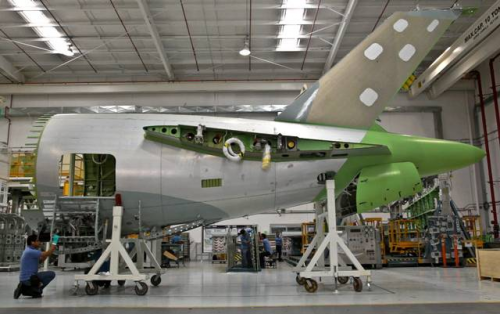
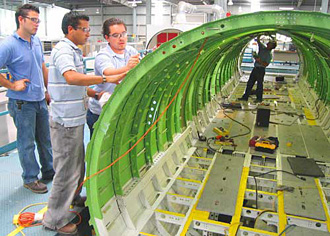
the cancelled Bombardier 85 was supposed to have its fuselage being built in Mexico that fuselage was built in Mexico
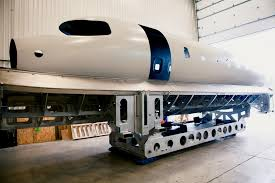
this is a Bell 505 fuselage built in Mexico by Aernnova
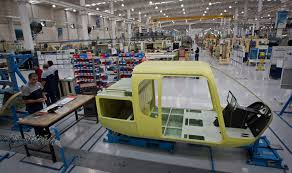
Mc Donnell Helicopter fuselage built in its Plant in Chihuahua Mexico
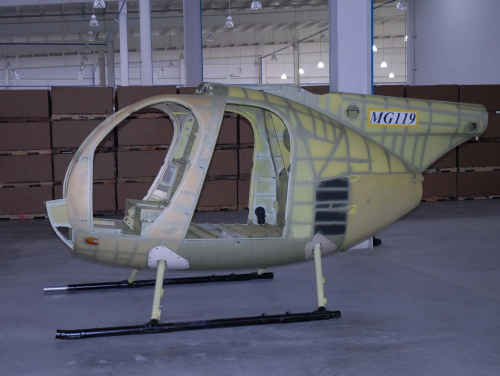
Bell textron build also fuselages in Mexico
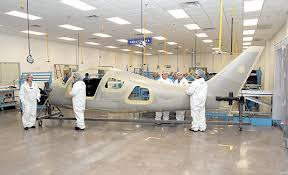
we build now small aircraft like the Pegasus or the Horizontec but these are still years behind of what Embraer makes.
What was learnt in Mexico from the callair A-9? simple it is better just manufacture the aircraft rather than build them to sell them so today we do not engage in license of aircraft, the Aeromarmi was a failure of that type.
you can see what Aernnova builds in Mexico just by clicking this link
http://www.aernnova.com/en/global-presence/aernnova-mexico/
today we are suppliers in fact Frisa Aerospace is a Mexican company leader in outer casings for jet engines read this
Frisa Forjados reported it has entered into a long-term agreement with Pratt & Whitney, to produce and supply forged rings and casings for the new PurePower PW1000G turbofan engines. Specific terms of the deal were not announced, though the forger indicated it carries a value above $150 million.
Pratt & Whitney’s PW1000G is a high-bypass geared turbofan engine that has been selected to power several commercial aircraft programs, including the Bombardier CSeries, Mitsubishi Regional Jet, and Embraer's redesigned E-Jet regional aircraft. It is offered as an option for the Irkut MS-21 and Airbus A320neo aircraft.
source https://www.forgingmagazine.com/forming/frisa-ltsa-p-w-rings-casings
for further read https://www.frisa.com/industries/aerospace.html
Last edited:
pegasus
I really should change my personal text
- Joined
- 22 March 2019
- Messages
- 303
- Reaction score
- 208
Augusto Cicare flying his helicopter with the Labala turbine

LABALA turbine fitted in a CICARE helicopter, the Labala Jet engine turbine was designed in Argentina by Gustavo Labala and flown by Cicare in one of his Helicopters also designed and built in Argentina, it was a first for Latin America

http://gustavolabala.com.ar/helicopteros-cicare/
https://www.taringa.net/+militares_en_t/turbina-labala-acoplado-en-un-helicoptero-cicare_s9nz1
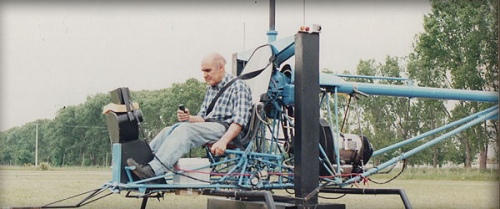
LABALA turbine fitted in a CICARE helicopter, the Labala Jet engine turbine was designed in Argentina by Gustavo Labala and flown by Cicare in one of his Helicopters also designed and built in Argentina, it was a first for Latin America
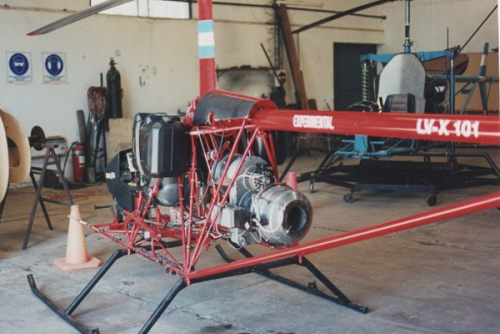
http://gustavolabala.com.ar/helicopteros-cicare/
https://www.taringa.net/+militares_en_t/turbina-labala-acoplado-en-un-helicoptero-cicare_s9nz1
pegasus
I really should change my personal text
- Joined
- 22 March 2019
- Messages
- 303
- Reaction score
- 208
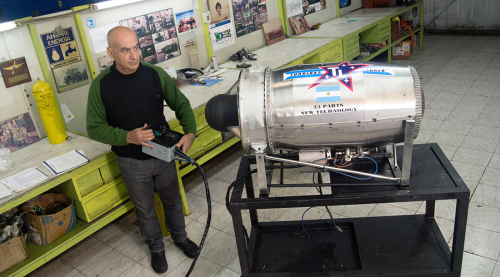
Labala turbine applied to aviation
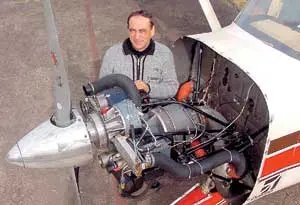
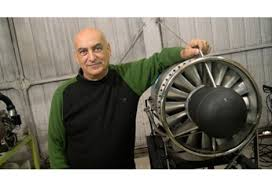
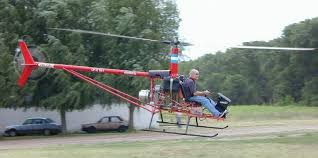
In September 2002 the GFL-2002 turbine was used on the CH-2002 twin seat Helicopter, the project did not avance beyond tests but the Helicopter did as the Project CH-12
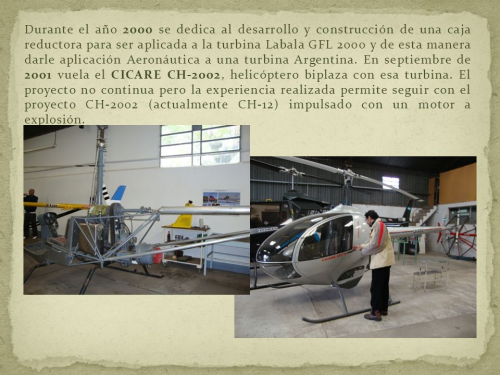
early Helicopter CH-6 adapted to use a Labala turbine for a single seat Helicopter built in Argentina and designed by Cicare and Labala aided by Argentina's government
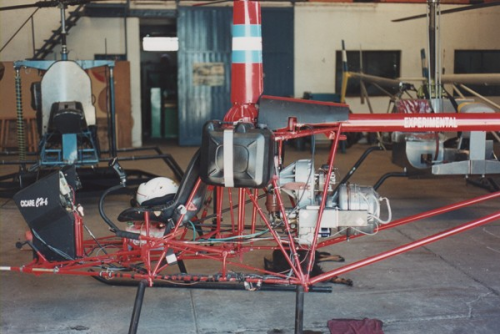
Last edited:
pegasus
I really should change my personal text
- Joined
- 22 March 2019
- Messages
- 303
- Reaction score
- 208
Cicare has 2 missing numbers CH-10 and CH-13, the CH-15 should be a new model after CH-14, while Cicares website says CH-14 is in development as well CH-11, the only real products are CH-7 and to a lesser extend CH-12 and CH-8 all others were experimental or with very low production, the CH-8 and CH-12 are twin seat aircraftHi,
there is two mystery helicopter,the Cicare CH-13 & CH-15 ?.
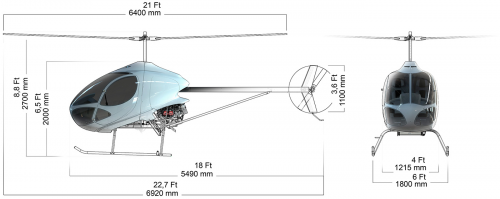
n 1958, Cicaré designed and built one, the CH-1, which flew for the first time with a 30 hp engine.
In spite of the inflation of 40% that was generated during the government of Juan Perón, the company Cicaré continued, partly financed by the educational work of the wife of Augusto and by friends like investors.
In the decade of 1970, after the government of the Perón family and economically Argentina was debased with an inflation of 600%, again the military took control. In spite of all this tension of the government, Cicaré continued to develop its helicopters and then produced the CH3 in 1975.
In 1989, Carlos Menem took power, encouraged foreign investment, cut import tariffs and restored the economy, during Menem's presidency, Cicaré built the helicopter coach SVH3, which made him stand out as an Argentine designer and also brought some very necessary to sell models to the Argentine police and other military as a coach.
In 2000, British entrepreneur Gary McCormack bought four Cicare SVH3, which led to the UK for corporate entertainment with his company, Blue Sky Blue. Unfortunately, this period of success was followed by a collapse in the Argentine economy, followed by regulatory problems with purchases in the United Kingdom. The company of Gary McCormack stopped operating, Cicaré Helicopteros SA went into liquidation. Later he was reborn as Cicaré SA.
In the mid-2000s, the military approached the Cicaré company regarding a collaboration for a classified helicopter design. The CH-14 helicopter from Cicaré was to be the first design of a family of helicopters that would provide national solutions for the requirements of the armed forces, security and the civilian market.
In January 2006, Cicaré S.A. began the design and production of the experimental prototype of the CH-14. It counted with the participation of the Technical Department of the Army Aviation Command and numerous national suppliers. However, with the presidency of Cristina Fernández, the funds for the machine were withdrawn, the helicopter was deactivated.
In 2015 with the arrival of Mauricio Macri in the government, Argentina's economy has slowly improved and his government is once again working to make business feasible in the nation. A Cicaré SA was granted a loan from the government to build a new hangar and expand its business.
https://www.mercadomilitar.com/noti...-el-triunfo-de-los-helicopteros-cicare-18386/
http://www.cicare.com.ar/cicare8/index.html
Last edited:
- Joined
- 26 May 2006
- Messages
- 34,928
- Reaction score
- 15,798
Thank you Pegasus,
but the Cicare CH-10 was a little known helicopter;
 avia-pro.net
avia-pro.net
Design model Cicare CH-11 ultra-light aircraft began in the middle of the Argentine aircraft manufacturers 90-ies of the last century. As a fundamental principle, aviarazrabotchiki used a little-known model helicopter Cicare CH-10, which appeared in 1993 year, however, its design has been comprehensively improved and technical part has undergone important changes, which is why the aircraft gained great opportunities, and its flight performance in largely improved.
but the Cicare CH-10 was a little known helicopter;
Helicopter Cicare CH-11. Specifications. A photo.
Helicopter Cicare CH-11. Specifications. A photo. Cicare CH-11 - Argentinean single ultra-light helicopter, developed in 1998 by the aircraft manufacturer Cicare Helicopteros SA. Cicare CH-11 photo
Design model Cicare CH-11 ultra-light aircraft began in the middle of the Argentine aircraft manufacturers 90-ies of the last century. As a fundamental principle, aviarazrabotchiki used a little-known model helicopter Cicare CH-10, which appeared in 1993 year, however, its design has been comprehensively improved and technical part has undergone important changes, which is why the aircraft gained great opportunities, and its flight performance in largely improved.
pegasus
I really should change my personal text
- Joined
- 22 March 2019
- Messages
- 303
- Reaction score
- 208
it is hard to know the official page has after the CH-9, the CH6T as the following model developed implying up to a certain degree the CH-10 is the old CH-6T prototype with the Labala jet engine.Thank you Pegasus,
but the Cicare CH-10 was a little known helicopter;
Helicopter Cicare CH-11. Specifications. A photo.
Helicopter Cicare CH-11. Specifications. A photo. Cicare CH-11 - Argentinean single ultra-light helicopter, developed in 1998 by the aircraft manufacturer Cicare Helicopteros SA. Cicare CH-11 photoavia-pro.net
Design model Cicare CH-11 ultra-light aircraft began in the middle of the Argentine aircraft manufacturers 90-ies of the last century. As a fundamental principle, aviarazrabotchiki used a little-known model helicopter Cicare CH-10, which appeared in 1993 year, however, its design has been comprehensively improved and technical part has undergone important changes, which is why the aircraft gained great opportunities, and its flight performance in largely improved.
CICARE CH-8 UL
It is the logical consequence of the success of the CH-7. Using the same solutions than its predecessor, emerges this prototype of helicopter that is very light, two-seat, powered by two engines. The characteristics of its power plant, enables it to fly at minimum speed, with only one operative engine.
First flight: 1993
See Technical Data
CICARE CH-9
This new single-seat, two-engines powered design is characterized by a greater safety and reliability. It has a higher load capacity than the CH-7.
First flight: 1995
See Technical Data
CICARE CH-6 T
It is a redesign of the CICARE CH-6 to be powered by the Labala GFL 2000 turbine engine and this way starts with the test of this new turbine.
First flight: 1999
source
http://www.cicare.com.ar/en-helicopteros-desarrollados.html
There is an interview in CNN of Augusto Cicare
https://cnnespanol.cnn.com/video/argentina-metas-por-delante-helicopteros-cicare-mercado-sur/
The interview is in Spanish so I will translate what he says, he says he hopes he will live longer and God allows him to be able to fulfil his dream of new helicopter models, Cicare has a difficult situation because it is a minor player, in 2017 they sold 70 helicopters, something not bad, but in a competitive world that is nothing
https://archivo.urgente24.com/26313...icare-no-es-el-1er-fabricante-de-helicopteros
The company RACA S.A. (Representaciones Aero Comerciales Argentinas Sociedad Anónima) was founded in August 1969 by the well-known pilot José R. Fernández Racca. Born in 1916 in San Javier, province of Santa Fe, he joined the group of Argentine professional pilots since 1939. In 1947, with the arrival of the first Sikorsky S-51 helicopters, he was attracted by these new machines and decided to specialize in them. Thus he became one of the first pilots of rotating wings of our country, when obtaining the license Nº 9 on March 20, 1952 in the remembered National School of Civil Aviation. He then expanded his habilitations to the degree of instructor (he trained more than sixty pilots) and inspector of flight of helicopters.
Initially the company RACA was dedicated to the commercialization of aeronautical products manufactured by its representatives, among them Sud Aviation, British Aircraft Corporation, Canadair, Messerschmitt-Bölkow-Blohm, Cessna, Shorts, Bell, Sino Swearingen and Hughes, selling in three more years of twenty helicopters and one hundred aircraft.
This remarkable commercial success was combined with Fernandez Racca's passion for helicopters and his extensive knowledge of the needs of the local market, giving rise to the idea that would lead him to become the first helicopter manufacturer in South America.
In 1971 RACA made an agreement with the Air Force Command of the Air Force and was established in the southeastern boundary of the then San Fernando airfield, with the express objective of developing a program of national production of helicopters under license. Shortly after, at the beginning of 1972, it signed a preliminary agreement with the Aircraft Division of the Hughes Tool Company to acquire the license to build Hughes 500 helicopters in all its versions in the country, an agreement that was finalized on December 7 of that year. . RACA S.A. He became the third Hughes licensee in the world, after Kawasaki Heavy Industries of Japan (1967) and Breda Nardi of Italy (1968).
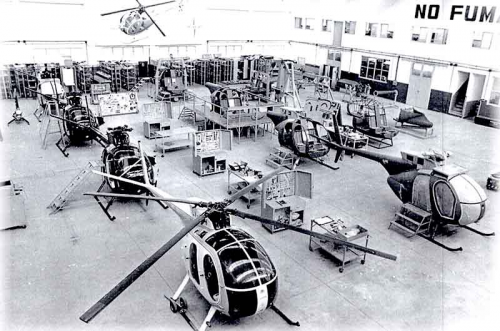
RACA Hughes 500
The program approved by the Council of the Aeronautical Industry specified that one hundred and twenty helicopters would be built within eight years, with the customary progressive integration of national labor. The production, which was based on two models of the Hughes 369 series commercially known as model 500, began in 1973 with the 500C version (models 369HS / HE / HM) and as of February 1980 continued with the 500D (model 369D). The 500C had the V-tail and the four-blade main rotor, while the 500D had the T-tail and the five-blade main rotor.
When manufacturing was interrupted in 1984, some fifty units had been delivered. Twenty-five were operated in civil applications, by security forces and by INAC. Among them stand out five private companies: Acíndar (model 369HS, series A-0643-S, registration LV-LOJ), Astilleros Alianza (model 369HS, series A-0751-S, registration LV-LTL), Loma Negra (model 369HS) , series A-0708-S, registration LV-LTF), RACA (models 369HS, series A-0667-S and A-0729-S, number plates LV-LOM and LV-LTI) and Techint (model 369HS, series A- 0652-S, registration LV-LOR). It also operated with two state companies: YPF (models 369HS, series A-0568-S and A-0590-S, license plates LV-LNG and LV-LNH) and Water and Energy (models 369HS, series A-0529-S, A -0633-S and A-0655-S, license plates LV-LLP, LV-LOH and LV-LOL) and with eight provincial governorates: Corrientes (model 369HS, series A-0679-S, registration LV-LOO), Chaco and Tucumán (model 369HS, series A-0670-S, registration LQ-LON), Santa Fe (models 369HS, series A-0718-S and A-0719-S, license plates LV-LTG and LV-LTH), Santiago del Estero (model 369HS, series A-0521-S, registration LV-LLO), Córdoba (models 369HS, series A-0592-S and A-0640-S, number plates LV-LNI and LV-LOI), San Juan (model 369HS) , series A-0731-S, registration LV-LTJ) and Tierra del Fuego (model 369HS, series A-0694-S, registration LV-LOS).
raca2.jpg
Building of the turbo-diesel engine workshop Allison, used by RACA.
The National Gendarmerie operated five helicopters (four 369HS, series A-0753-S, A-0765-S, A-0766-S and A-0816-S, license plates GN-908 to GN-911, and model 369D, series A -0765-D, license plate GN-918) and the National Institute of Civil Aviation operated four (models 369D, series A-0886-D, A-0911-D, A-0933-D and A-0974-D, plate numbers PGH -01 to PGH-04).
The Argentine Air Force used RACA aircraft model 500C, D and E. In addition, at the end of the nineties two of the INAC helicopters (PGH-01 and PGH-03) were incorporated into the Air Force and sent to Cyprus to be operated in United Nations peace missions.
Used in the most demanding conditions and in all types of performance, the RACA Hughes 500 helicopters have proven to be reliable, robust and versatile. In addition to their military uses, which are almost always extremely demanding, the 500C and 500D civilians operated in the fight against forest fires (transporting personnel and carrying a 500 liter Bambi Bucket bucket), in high mountain rescues, in glaciological flights over Antarctica , in flights for Greenpeace, in rescue missions of populations isolated by floods (in Santa Fe it was possible to transport up to eleven people per flight, between children and adults), etc.
It is worth noting that three 500C civil helicopters were incorporated into the Malvinas War effort, operating in the continental territory at the Army Aviation service (LV-LLP, LV-LOM and LV-LTG). They were the only helicopters of national manufacture that flew in the Malvinas Operations Theater.
In the manufacture of the 500 model RACA achieved a national workforce application of 85% of the total needed to build the helicopter structure. This included the cutting, bending, shaping, drilling and assembling of the sheet metal components, as well as the riveting and gluing of all the components that made up the complete semi-monocoque structure, the tail cone and the stabilizers. All the parts and fairings of composite materials, the transparent area, the complete interior, as well as the metal parts of the main rotor were also manufactured.
Helico
In 1980, RACA developed a military version of the 500C model (369HM), in a program that it named Helico (Light Combat Helicopter). It was destined to operate as an aerial vehicle for reconnaissance and attack against land targets, with the possibility of using it also as an antitank and anti-submarine system. The remarkable thing about this design is that the modification of the cell was designed and developed by RACA's own technical office, while all the equipment and guns were developed by the national company Munex S.R.L.
The first tests were done on two Air Force 369HM Hughes (number plates H-24 and H-25), but after some tests it was concluded that these helicopters were not suitable, since the external loads penalized them such a point that their performance

